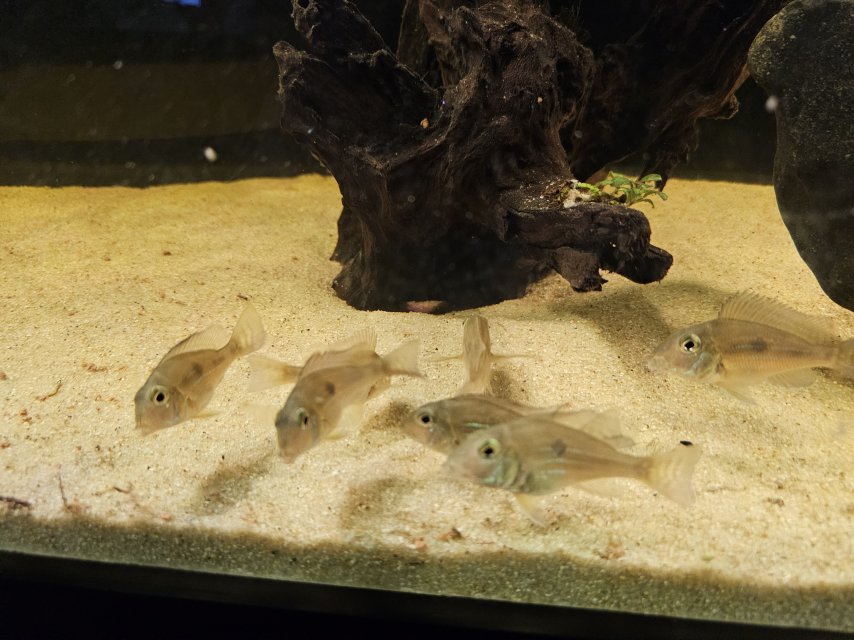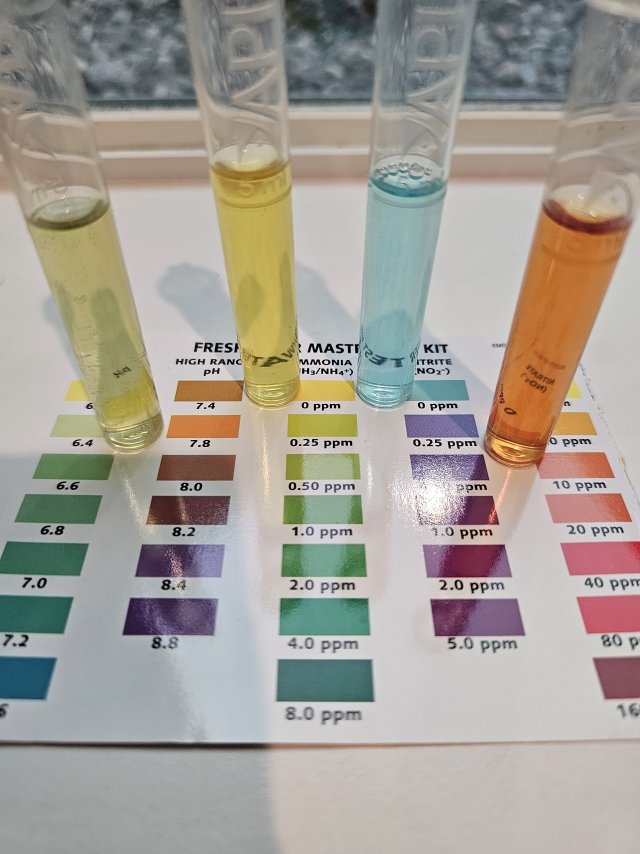Hello everyone. I'm posting for the first time here after getting tons of good info from this forum. I'm just so frustrated and I have no idea how to proceed. Here's the quick summary:
The first 12 days I had the fish, they were spunky and active, constantly sifting sand as they will do. On 3/29, in addition to finding the first dead one, they were acting stressed and scared, not coming to greet me at the glass every time I walked by (like they'd always done before). I added some Sachem Stress Guard after the water change.
I added the Hatchetfish on 3/30 thinking some dither fish may help calm the Geos down, but they had no effect (the Hatchetfish seem to be doing great so far). The Geos will have periods where they almost act like they used to, but eventually they go back to hiding. They sift sand only occasionally.
Aside from acting stressed, the Geos look 100% fine. know the store I got them from very well, have purchased other fish there, and they'd had the Geos for at least a month before I bought these. I plan to go there and see what the owner thinks, and if he's inexplicably lost any of them (he had loads more).
Sorry this is so long, I wanted to provide as much info as possible (I'd be happy to provide more pictures, video, or any other information that might be helpful). I have pics of the first two dead fish, but I don't like to look at them so didn't want to post them. Please let me know if you have any ideas on things that might be going on and/or steps I could take (or anything I may have left out).


- 125 gallon, cycled since 3/3 (took 9 days with seeded filter media)
- Lightly planted - here's what I've got:
- Dwarf Water Lily
- Red Tiger Lotus (x2)
- Red Root Floaters (tons)
- Water Sprite
- Water is crystal clear with slight tint of tannins from driftwood
- pH 6.4
- Ammonia 0
- Nitrites 0
- Nitrates <10 (it has never reached higher than 10 and I test often)
- Stocking
- 7 large mystery snails (added 3/3/25)
- 10 small mystery snails (added 3/8/25)
- 4 Geophagus Sveni juveniles (8 added 3/16)
- 6 Dusky Narrow Hatchetfish (added 3/30)
- Oxygenation via canister filter outflow and large air stone
The first 12 days I had the fish, they were spunky and active, constantly sifting sand as they will do. On 3/29, in addition to finding the first dead one, they were acting stressed and scared, not coming to greet me at the glass every time I walked by (like they'd always done before). I added some Sachem Stress Guard after the water change.
I added the Hatchetfish on 3/30 thinking some dither fish may help calm the Geos down, but they had no effect (the Hatchetfish seem to be doing great so far). The Geos will have periods where they almost act like they used to, but eventually they go back to hiding. They sift sand only occasionally.
Aside from acting stressed, the Geos look 100% fine. know the store I got them from very well, have purchased other fish there, and they'd had the Geos for at least a month before I bought these. I plan to go there and see what the owner thinks, and if he's inexplicably lost any of them (he had loads more).
Sorry this is so long, I wanted to provide as much info as possible (I'd be happy to provide more pictures, video, or any other information that might be helpful). I have pics of the first two dead fish, but I don't like to look at them so didn't want to post them. Please let me know if you have any ideas on things that might be going on and/or steps I could take (or anything I may have left out).




